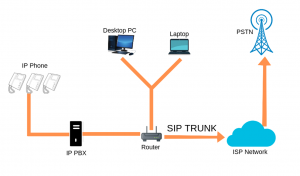Integrated Services Digital Network (ISDN), a service that integrates voice and data on the same lines, carried over copper and adds features that were not available in the classic telephone system. It has been used in Australia for over 20 years and now finally it has reached the end of its life. Businesses currently using ISDN services will need to migrate to alternative services that use the NBN broadband access network. Even if a business is already connected to NBN for the internet services, they will still require migrating all copper-based ISDN services. Doing so will not only help businesses upgrade their communications but also utilise a solid IP-based solution.
With network providers phasing out ISDN 2 and ISDN 10/20/30 services over the next years to come with some carriers commencing their disconnections in June 2019, the clock is ticking, it is time to find out an alternative solution for your business.
Thankfully, a solution exists, one that is more efficient than ISDN. SIP or Session Initiated Protocol is the future of business voice.

SIP Trunking is a method by which businesses can communicate using an internet connection instead of a traditional phone line. SIP Trunking works with VoIP phone systems (Voice Over Internet Protocol) and is based on SIP, Session Initiation Protocol, a signalling protocol used for initiating, maintaining, and terminating real-time sessions that include voice, video, and messaging applications. It enables connection to standard PSTN, thus, eliminating the need for multiple ISDN lines. A SIP Trunk needs to connect to a PBX, which allows it delivering multiple calls simultaneously. Calls can be handled through manual features such as call transfer or automated features such as a mobile diversion or hunt group and you can either host your PBX in the cloud or at your premises.
BENEFITS OF SIP TRUNKING OVER ISDN SERVICES
- PORTABILITY
As SIP phone numbers are not tied to physical locations, calls to SIP numbers can be diverted incredibly easily to other locations in case of an emergency or unavailability. Multiple sites, remote workers can be connected using call redirection options to ring specific extensions or mobile numbers when a specific line is engaged or a worker is out of their desks. - SUPPORTS GROWTH
Expand the business reach using virtual numbers both locally and internationally. Using virtual SIP numbers helps a business establish a local presence anywhere in the world. - LOWER CALL RATES
SIP Trunking typically offers lower call rates and this can be relatively cheaper for a business with a high volume of calls on a daily basis. - CONVERGENCE
Rather than paying for both voice and data services, SIP Trunking allows businesses to use these services over a common IP network. - INDEPENDENCE OF ACCESS NETWORK
As SIP voice is transferred as Internet Protocol, it can be carried over copper, fibre and MPLS wireless access networks. Implementation of SIP Trunking positions a business for transition to an all fibre access network. - DISASTER RECOVERY
Can be configured with Automatic failover capabilities ensuring no calls are lost during service interruptions. - NO BUSY SIGNALS
The risk of not having enough call paths during peak hours with increased inbound call activity is mitigated using Dynamic Line Bursting, a feature that allows a caller to burst over the number of predefined call paths.
WHAT HAPPENS WHEN YOUR PHONES ARE OFF THE AIR?
Designed to protect business customers by increasing reliability and survivability during service interruptions that occur unexpectedly, SIP Trunking disaster recovery provides your business with continuity of service via systematic re-routing of incoming calls to cell phones, voice mailboxes, or branch offices.
HOW TO MAKE THE MOVE FROM ISDN TO IP VOICE?
Your existing lines will need to be migrated to new technology and there are a few networking aspects to be considered including available bandwidth, Quality of Service (QoS), and firewalls. Using QoS will help provide the necessary bandwidth by prioritizing your business voice traffic as well as firewalls that need to be configured for SIP trunking.
Let us help you make this transition a breeze. Auswide Communications can carry out feasibility on each of your sites to identify what types of data services are available. Based on this data, we will produce a solution that works best for your business.

